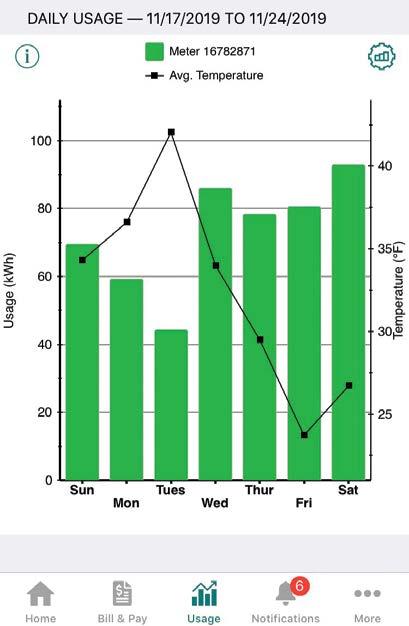
2 minute read
THE BUSINESS OF SAVING ENERGY
By Phil Cameron, Energy Conservation Works
Whether you’re motivated by cost savings, environmental benefits, the value of your property, the comfort of your clientele, and/or the productivity of your employees, there are myriad resources available to guide you down the road of energy efficiency.
In partnership with Lower Valley Energy, Energy Conservation Works can help you navigate the process of understanding and reducing your energy footprint. It’s often difficult to know where to begin, so we’ve mapped out a five-point process to help you:
1. It all starts with understanding how and when you use energy. You can work with Lower Valley Energy (LVE) to gain access to Smart Hub, which allows nearly real-time access to your electricity use via web and mobile app-based access. LVE can also provide you with detailed usage reports by month and year, upon request.
2. Starting with a professional energy audit allows an energy professional to recommend the most effective solutions. An audit can comprehensively address your building, evaluate a specific equipment replacement project, and/or address commercial demand charges for periods of high use. As a result of grant funding, these audits are currently available to qualified small businesses at a rate of 75% below cost. An audit is required for commercial loans, LVE rebates, and federal rebates and grants.
3. Once you have completed an audit, quantifying potential energy savings, you can apply for a zerointerest Commercial Energy Loan through Energy Conservation Works. The program allows you to complete suggested measures and pay off the costs over five years on your energy bill.
4. Some conservation projects, especially lighting, may qualify for Lower Valley Energy rebates and incentives through their conservation program. Project rebates require pre-approval, so check-in with us before you begin your projects to learn more.
5. Projects identified through the commercial audit process can often apply for up to 25% cashback in the form of Federal Energy Rebates. Such projects may also qualify for additional federal tax credits. Speak to your tax professional in advance of any such projects.
The approaches you can take to reducing your bottom line, reducing your emissions, and improving your operation are numerous and varied. Like any journey, the first step is often the hardest, but what matters is starting! Consider Energy Conservation Works as your community partner in the journey of operating your business more efficiently and contact us at www.energyconservationworks.org or (307) 413-1971 to get started.









